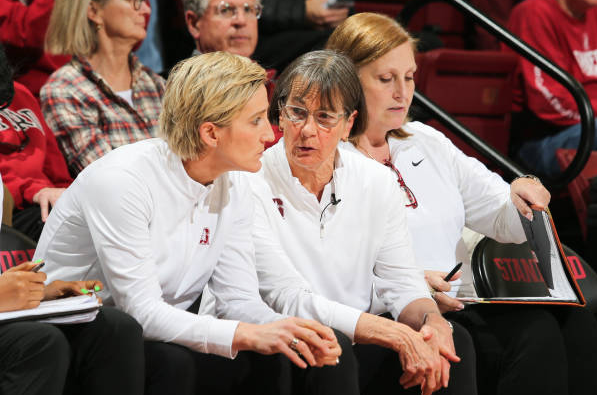According to Stanford Cardinal coach Tara VanDerveer, women’s college basketball may find it difficult to stay up with all the changes, even with its tremendous expansion.
Speaking prior to her team’s matchup with the NC State Wolfpack in the Portland 4 regional semifinal, VanDerveer voiced her concerns with the recent change to a two-regional site format, saying it might not be the best arrangement given the changing nature of the sport.
Making history as the most successful college basketball coach in January, VanDerveer admitted that selections for the tournament are frequently selected years in advance and do not always reflect the condition of the sport at that moment. She said it might be advantageous to go back to a four-team regional structure.
Tara VanDerveer on the Evolution of Women’s Basketball

This change is made as the women’s tournament moves away from its former format, which replicated the men’s event’s structure with regionals held at four different locations.
The two-site structure was introduced in 2019, which was prior to a notable increase in the popularity of the sport.
Vice President of Women’s Basketball for the NCAA Lynn Holzman announced plans to speed the review of the championship format, which was initially scheduled to begin after the 2025 tournament and end in 2024.
The objective of this assessment is to assess the tournament’s different characteristics, including the two-site regional format’s feasibility in light of women’s basketball’s recent expansion.
The argument also encompasses the tournament’s seeding procedure, in which the first two rounds of play are hosted by the top 16 seeds.
Given the changing nature of women’s basketball, VanDerveer emphasized the continuous difficulty in figuring out the optimal strategy.
Read Next: Veteran Azarenka battles back, sets Miami semi-final clash with Rybakina
Coaches Discuss Impact of Two-Regional Format
Wes Moore, the coach of NC State, expressed his early good thoughts on the two-regional structure, pointing out that it could level the playing field by reducing team home-court advantages.
Along with talking about tournament logistics, VanDerveer expressed support for a units program that pays conferences for winning tournaments, much like the men’s team does.
She thinks that this would encourage funding for women’s basketball programs even more. Charlie Baker, the president of the NCAA, has reaffirmed the association’s intention to look into this idea.
Both coaches believe that women’s basketball will continue to develop and flourish in the future due to a surge in talent, more media attention, and television viewership.
They believe that the sport has enthusiasm and potential in the future, despite obstacles like player transfers that influence parity.
Future regionals are slated to take place in a variety of cities, such as Spokane, Washington, Birmingham, Alabama, Fort Worth, Texas, and Sacramento, California. It seems that the landscape of women’s collegiate basketball is set to continue growing and changing.
Read Next: Why Xavien Howard Is the Perfect Fit for the Lions’ Defensive Revamp


Comments are closed.